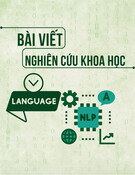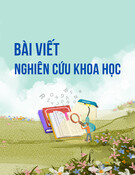
Tuyển tập Hội nghị Khoa học thường niên năm 2024. ISBN: 978-604-82-8175-5
556
COLLABORATIVE LEARNING IN WRITING CLASSES:
BENEFITS AND CHALLENGES
Nguyen Thi Hong Anh
Thuyloi University, email: anhnth@tlu.edu.vn
1. INTRODUCTION
Collaborative learning is considered a
critical skill in the 21st century because of
various benefits this teaching approach can
bring to language learners.
Collaborative writing tasks are defined as
tasks in which learners are required to work
in pairs or small groups to complete a jointly
written text (Swain, 2001). In other words,
collaborative writing offers English teachers
and students opportunities not only to
improve literature review, academic reading
and writing, but also to stimulate reflection,
knowledge sharing, and critical thinking
(Hadjerrouit, 2011). In addition, these tasks
encourage students to utilize a range of social
skills that can help promote accountability,
cooperation, and community (Sukirman,
2016). Furthermore, Foster (1998) observes
that collaborative writing tasks can maximize
students' interaction in the target language.
Other studies also revealed certain
difficulties students encountered while learning
writing collaboratively. Some of these
include increased stress, logistical problems,
target language usage, a conflict with
personal learning style, and issues of fairness
(Sukiman, 2016).
While learning academic writing, English
majored students in Vietnamese universities
often encounter challenges in organization,
grammar, vocabulary, supporting ideas, unity
and coherence (Thao & Quyen, 2020).
Collaborative writing has been introduced as an
effective strategy to make writing lessons more
engaging and to reduce stress for both teachers
and students. The present study aims to explore
collaborative learning at Thuyloi University
and try to answer a research question: “What
are benefits and challenges among English
majored students when they learn writing
collaboratively at Thuyloi University ?”
2.
RESEARCH METHODOLOGY
This study used a quantitative method with a
survey questionnaire carefully adapted from
Abde & Farrah (2015). The survey contained
16 Likert items and was given to English-
major students in two essay writing classes at
Thuyloi University. The teacher of these two
classes employed a collaborative writing
strategy from the beginning to the end of the
course. Her students were divided into groups
of three or four. She assigned tasks, and guided
them through reading, making presentations,
creating outlines, and writing essays. After the
course, 59 students received the questionnaire
via a google link, and 34 responded. The data
was analyzed using Excel software
3. RESULTS AND DISCUSSION
Table 1. Benefits and challenges of
collaborative learning
Items Mean Sd
SD
&D
(%)
N
(%)
A&
SA
(%)
1. Collaborative
writing is an effective
strategy that results in
better, more accurate
and complex essays.
3.88 0.97 8.85 8,85 82.3
2. Collaborative
writing makes the
task more enjoyable
and interesting, and
motivates to write
3.97 1.14 11.9 11.7 76.4

Tuyển tập Hội nghị Khoa học thường niên năm 2024. ISBN: 978-604-82-8175-5
557
Items Mean Sd
SD
&D
(%)
N
(%)
A&
SA
(%)
3. Expressing my
ideas to the group
improves my
communication and
negotiation skill
4.11 1.03 8.9 2.9 88.2
4. Collaborative
writing helps in
improving my writing
skill in general.
3.76 1.04 8.9 23.5 67.6
5. Collaborative
writing helps in
understanding and
considering multiple
viewpoints .....
4.29 1.00 6.0 2.9 91.1
6. Collaborative
writing helps in
constructing a strong
argument.
3.76 1.04 8.9 23.5 67.6
7. Collaborative writing
helps me verbalize ....
3.76 1.07 11.9 17.6 70.5
8. Collaborative
writing stimulates
critical thinking skills
3.94 1.04 8.9 11.7 79.4
9. In collaborative
writing, everyone
performs an equal
amount of work.
3.38 1.12 27.6 32.3 40.0
10. Collaborative
writing helps in
improving grammatical
accuracy and learning
vocabulary.
3.85 1.04 38.3 17.6 44.1
11. Collaborative
writing helps me
receive useful
feedback
4.0 0.98 6.0 11.7 82.3
12. It is unfair that all
the members get the
same grade.
3.47 1.07 17.7 35.2 47.0
13. Some members
do not accept
opposing opinions.
3.41 0.85 11.8 47.0
5
41.1
14. Some members
control the discussion
without giving others
an opportunity to
explain ...........
3.20 1.06 23.6 38.2 38.2
15. Collaborative
writing consumes a
lot of time.
2.79 1.12 38.4 35.2 26.4
16. Members discuss
their ideas in
Vietnamese, which
decreases the chances
of improving ......
3.20 1.0 26.6 41.1 32.3
3.1. Benefits of collaborative writing
The findings revealed that collaborative
writing was an effective learning strategy
with over 80% of respondents concurring that
learning in the group bettered their essay
writing skills (Mean = 3.88, Sd = 0.97).
Collaborative activities also received positive
feedback from participants when they could
construct a strong argument (Mean = 3.76, Sd
= 1.04), express more ideas (Mean = 3.76, Sd
= 1.07) and promote critical thinking (Mean
= 79.4, Sd = 1.04). More significantly, nearly
all students in the two writing classes expanded
their understanding and embraced different
viewpoints on a certain topic thanks to this
teaching approach (Mean = 4.29, Sd = 1.00).
Most respondents expressed a preference
for writing with their peers because they
could receive useful feedback (Mean = 4.0,
Sd = 0.98).
3.2. Challenges of collaborative writing
The first factor to consider was fairness.
Only 27.6% of parcicipants agreed that all
group members performed an equal amount of
work. Around 40% of students remained
neutral, and nearly 50% of participants felt it
was unfair when they got the same grade.
Moreover, most respondents found it difficult
to be involved in an effective group discussion,
with just more than 20% of respondents
reporting that they had opportunities to explain
their ideas, and almost half stayed neutral when
being asked about the acceptance of opposing
opinions. Students in these classes also
highlighted the problems of time (Mean = 2.79,
Sd = 1.12). Vietnamese language use in group
discussions posed another drawback (Mean =
3.20, Sd = 1.0). Over 40% of students reflected
that they had not made obvious improvement
in grammar and vocabulary during the
collaborative writing course.
In general, this learning strategy can
improve students' writing skills by promoting
critical thinking and creating an engaging
environment for learners to share and discuss
ideas. It also encourages teamwork and pair
work skills. However, there are considerations

Tuyển tập Hội nghị Khoa học thường niên năm 2024. ISBN: 978-604-82-8175-5
558
relating to fairness in assessment on students’
performance, communication challenges, and
time constraints. These findings from this
study are consistent with previous studies
which mentioned challenges in collaborative
writing regarding assessment (McDonough et
al.,2018), how to best pair students (Storch &
Aldosari, 2013), how to monitor equal
participation (McDonough & García Fuentes,
2015), and learners’ usage of their first
language (Brooks & Donato, 1994).
Because the abovementioned benefits seem
to outweigh the challenges, collaborative
learning should be emphasized in writing
classes (Surkiman,2016). It is thus critical for
teachers to plan the whole course and each
lesson carefully. This teaching method should
be introduced at the first lesson with teachers'
detailed list of tasks for their students.
Students can choose their group members,
then the teacher assigns the tasks with time
allowed for each group to complete. This can
solve the problem of time constraints. To deal
with the challenge of fairness, each group
should have a group leader to monitor, record
and report task completion levels. This can
help the teacher to decide on students’ marks
at the end of the semester. Some rules in
communication and English language usage
should be issued by teachers from the
beginning of the course to avoid some
conflicts among group members and to
maximize opportunities for improving English
communication skills. Teachers must be the
referees of the whole collaborative writing
process who will give detailed records and
reliable feedback on students’ performance.
4. CONCLUSION
This study aims to investigate the benefits
and challenges of collaborative writing in
English classes. Some pedagogical
recommendations for addressing drawbacks
have been offered. However, the study still
has some limitations. Firstly, the findings of
this research are not easily generalized due to
the limited number of participants. Moreover,
this article only reveals the benefits and
challenges that students encountered. How
teachers perceive collaborative learning, and
how they can evaluate and assess their
students’ performance are two big questions
to answer in further research.
5. REFERENCES
[1] Abdel, M., &Farrah, H. (2015). Online
Collaborative Writing Students’ Perception.
Journal of Creative Practices in Language
Learning and Teaching ,3(2), 17-32.
[2] Brooks, F. B., & Donato, R. (1994).
Vygotskyan approaches to understanding
foreign language learner discourse during
communicative tasks. Hispania, 77(2), 262-
274. DOI: https://doi.org/10.2307/344508.
[3] Foster, P. (1998). A classroom perspective
on the negotiation of meaning. Applied
Linguistics 19(1), 1-23. DOI:https://doi.org/
10.1093/applin/ 19.1.1.
[4] Hadjerrouit, S. (2011). A collaborative writing
approach to wikis: Design, implementation,
and evaluation, Issues in Informing Science
and Information Technology, 8, 431-449.
DOI: https://doi.org/10.28945/1432.
[5] McDonough, K., De Vleeschauwer, J., &
Crawford, W. (2018). Comparing the quality
of collaborative writing, collaborative
prewriting, and individual texts in a Thai
EFL context. System, 74, 109-120. DOI:
https://doi.org/10.10/ j.system.2018.02.010.
[6] McDonough, K., & Fuentes, C. G. (2015).
The effect of writing task and task conditions
on Colombian EFL learners’ language use.
TESL Canada Journal, 32(2), 67-67. DOI:
https://doi.org/10.18806/tesl.v32i2.1208.
[7] Storch, N., & Aldosari, A. (2013). Pairing
learners in pair work activity. Language
teaching research, 17(1), 31-48. DOI:
https://doi.org/10.1177/1362168812457530.
[8] Sukirman, S. (2016). Using collaborative writing
in teaching writing. Langkawi: Journal of The
Association for Arabic and English, 2(1), 33-46.
DOI: http://dx.doi.org/10.31332/lkw.v2i1.443.
[9] Thao, T. Q., & Quyen, N. H. N. (2020).
Exploring tertiary English-majored students’
academic writing difficulties. TNU Journal of
Science and Technology, 225(11), 123-130.
DOI: https://doi.org/10.34238/tnu-jst.3686.



![Mẫu câu viết thư thân mật bằng Tiếng Anh [Chuẩn Nhất]](https://cdn.tailieu.vn/images/document/thumbnail/2025/20250708/caotiendat91211.thd2017@gmail.com/135x160/80151751961845.jpg)
![Tài liệu gợi ý viết email tiếng Anh và 35 đề thi mẫu [chuẩn SEO]](https://cdn.tailieu.vn/images/document/thumbnail/2025/20250708/caotiendat91211.thd2017@gmail.com/135x160/25321751961846.jpg)





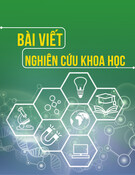
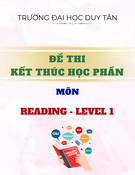
![Đề cương môn Tiếng Anh 1 [Chuẩn Nhất/Mới Nhất]](https://cdn.tailieu.vn/images/document/thumbnail/2025/20251130/cubabep141@gmail.com/135x160/51711764555685.jpg)
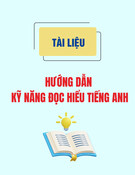

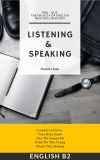
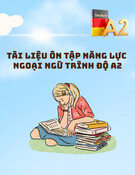
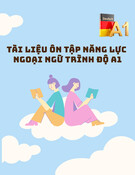

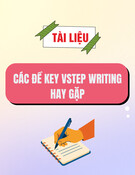
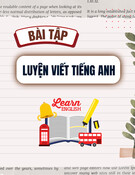
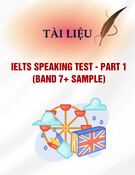
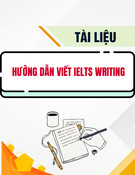
![Mẫu thư Tiếng Anh: Tài liệu [Mô tả chi tiết hơn về loại tài liệu hoặc mục đích sử dụng]](https://cdn.tailieu.vn/images/document/thumbnail/2025/20250814/vinhsannguyenphuc@gmail.com/135x160/71321755225259.jpg)
